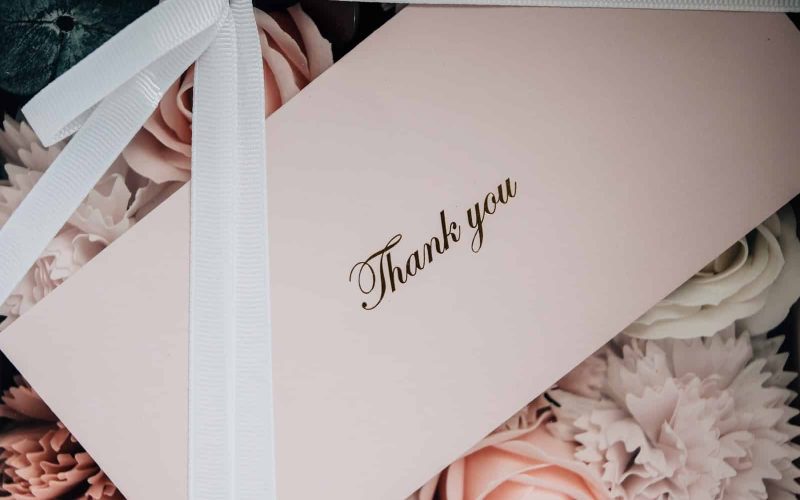Are flash cards relevant enough in a world of smartphones and iPads? As we know, children are more used to visual learning than ever before.
Flash cards have existed since the early 18th century. They have always been reliable and helpful learning tools for kids, making learning more accessible and assisting with assimilation.
It was one of the most versatile tools for learning before smartphones came into the picture.
What Are Flash Cards for Kids?
Flashcards, also known as index cards, are mostly rectangular-shaped cards, and they tend to bear helpful kids’ information on both sides, and each side can be flipped.
Any side might contain a question, and the other side might have the answer. Pictures can also be included on flashcards to help kids with their visual knowledge.
Flashcard information might include vocabulary, alphabet, numbers, procedures, formulas, and spelling.
Flashcards are used in classrooms or private studies. They are an active recall tool that helps students develop long-term memory.
The Ancient History of Flash Cards
The history of flashcards is challenging to trace. They have been in use since the 1800s and 1900s.
During that period, they were reportedly very expensive, and students from poor homes could not afford them.
Later, flashcards started being distributed to most schools, including poor students.
This was due to an influential book by a man named Joseph Lancaster.
The book was about the effect of cards on education, which made flashcards more popular as their value was recognized.
Since then, books have been written as flash cards. One of the first books reported in this form was ” Reading Disentangled.”
This was one of the first written flashcards for kids. The flash card had drawings and its first letter to teach alphabet reading and phonetics to kids.
Later, in early 1923, flashcards had already become a widespread tool many people in different countries used.
The word also first appeared in the Oxford English Dictionary. Flashcards advanced as time went on.
It was used to learn many things, from phonetics and spelling to mathematics.
Students also started producing flash cards to suit their needs. From there, flashcards became an integrated part of learning sessions.
The Modern History of Flash Cards
Flash cards can still be traced up until the present day. The only difference is that technology has taken over everything, including using paper flashcards.
Technologies like phones, tablets, and computers have become the primary learning tools.
Paper Flash cards have started to disappear. On the bright side, technology has given flashcards new functionality.
Kids can now use flashcards on apps on their phones, tablets, and computers.
Some flashcard apps that students can use include the Brainscape app, Quizlet, StudyBlue, etc. Technology’s impact on flashcards has helped optimize learning.
Benefits of Flash Cards for Kids
Flashcards Make Study Efficient
Flash cards are visual aids that allow spaced repetition. They help children learn and visualize new facts.
Students tend to remember what they see when they are taught something new or a new subject, which helps kids study information repeatedly, thus enhancing assimilation.
Active Thinking
Search has shown that actively thinking helps the brain grow. Thus, information that was required through active thinking tends to stick to the brain more than information that was not.
When kids use flashcards for a question-and-answer session, they put much effort into actively thinking of the answer to a question, which makes it possible for them to remember those answers better later on than those they required from rechecking their flashcards.
The advice is to give your kids enough time to try to recall the answer to a question before showing them the answer.
Active Recall
The repetition allowance flashcard helps information stick better in the brain. Flash cards with diagrams also help trigger kids’ memories, making recalling what they have studied easier.
Flashcards for kids in the time management aspects allow kids to study quickly as it makes assimilation faster and easier.
In his autobiography, other great people in history, such as John Stuart Mill, mentioned how flashcards helped him learn one or two things in life, including Greek, at an early age. It also helps with quick revisions just before tests or exams.
School Excellence
Research has shown that kids who use flashcards do better in school than those who don’t.
In some schools, teachers usually hint at questions for exams or tests.
Noting and studying those questions with flashcards makes passing easy, giving them a focus when studying.
Interest In Learning
Most Flashcards for kids come in beautiful colors. Research has shown that books or flashcards with colors, instead of supposed black-and-white books or flashcards, make kids more interested in learning them.
Enhance better interaction
Flashcards in class after a teaching session help carry all students along. It allows the course to be interactive between the teacher and the students.
Also, students tend to pay rapt attention during the teaching session because of the interactive flashcard session that would follow after the course.
Flashcards thus help students pay better attention in class. Teachers who adopt this method have nothing but good comments to pass on using flashcards, which also helps their students’ general performance.
Who Would Benefit From Flash Cards?
Most people, if not all, have one or two things to gain from flashcards. Flashcards benefit all age groups, not just kids, and students find them useful in their learning process.
Adults use them when preparing for tests or assessments like interviews and exams. Young children find it helpful because its visual aid motivates them to learn.
It is also valuable for many occupations. Though not all fields can benefit from flashcards, a few numbers can. Of course, teachers use flashcards for classroom drills.
Also, doctors use flashcards with their patients during speech therapy sessions.
These patients are displayed with flashcards, and they are asked to read them.
Other occupations, like scientists and designers, generally use them to demonstrate one or two things.
How to Make Paper Flashcards for Kids?
- Step 1: Buy your cards. Plain cards are usually inexpensive. Card templates can also be printed out to make flashcards. Another alternative is to use cardboard. Cut your cardboard with scissors into any shape you prefer, mostly rectangular.
- Step 2: Select an important, specific piece of information. Probably that information you find challenging to recollect or topics with a high probability of being an exam or test question.
- Step 3: set out questions from these topics or notes. You might also include diagrams to help stick information better. Write questions or diagrams on one side and answers on the other side.
- Step 4: categorize the cards based on topics or related information. Stacking your card based on this keeps them organized, and you won’t have any problem finding any card.
- Step 5: personalize the card to your taste. Add cues that might help trigger your memory, like mnemonics. Also, remember that flash cards should not be created at the last minute. Always have them ready ahead of when you need them. The process of making your card is also an act of active learning.
How to Make Digital Flash Cards for Kids?
Modern flashcards are studied by swiping or clicking on our phones or computer screens.
Luckily, technology has relieved the stress of purchasing or printing papers to make flashcards.
All we have to do now is download flashcard apps like Quizlet, StudyBlue, Brainscape, etc.
After downloading the app, it practically guides you to type in questions of your choice and their answers.
Also, make sure to save related questions together to keep them organized.
How to Use Paper Flash Cards?
Read and understand the information or question on the card, then try answering it to the best of your ability. Then, flip the card over to see if your answer is correct.
Suppose your answer was the correct move to the next. If incorrect, repeat the previous process or keep the card in a different space from the cards you could recall well.
The more you revisit cards you could not recall previously. The more the information sticks
How to Use Digital Flashcards?
As mentioned earlier, technology has made everything easier for us. After saving your questions and answers, you can visit the flashcards you would like to study and study them.
Some apps even help set the questions process by providing helpful questions about any topic you want.
Advantages of Flash Cards for Kids
When used with care, flashcards are very effective for teaching and learning.
It can increase self-confidence in kids, as it helps develop visual memory and stimulates thinking, so they begin to make associations and identify objects.
They have certain advantages that make them popular teaching aids in school. Some of them are:
It Helps Stimulate Visual Memory
Flashcards make learning easy for kids. Kids tend to remember what they see better than what they hear.
Interest in Learning
Since kids are interested in learning from attractive tools, flashcards, which are good attractive learning tools, make learning enjoyable for them. Thus, they make learning a thing of interest.
It Is Affordable
Flash cards are one of the most cost-effective teaching methods. They can be made at home from simple materials.
They would need plain paper, scissors, and whatever materials they needed to decorate. Then, lo and behold, they would have their cards ready.
You can work with the kids to create them and ensure they work properly. He will also instill the importance of organization and discipline from an early age.
Also, textbooks can be very expensive for kids, especially kids from poor homes. Compared to textbooks, books written in flashcards are more affordable for kids.
It is vitally important that young children follow and not limit their learning process. Since they are just beginning to understand and appreciate different ways of learning new things, now is an excellent time to introduce them to the concept of cards.
They Are Portable
Kids can easily carry flashcards anywhere. They weigh light compared to other books.
The weight makes it comfortable for kids to carry around. It also doesn’t limit learning to classrooms. Kids can take their flashcards home after school, and their parents can help them study.
Motivation
It is natural for many kids to feel demotivated when they have to read a book with many pages.
Flash cards help by debulking information into cards, motivating students to learn, and making studying look more straightforward than it is.
Versatility
Flashcards are not restricted to only some specific subjects like English and maths, such as;
- Key figures and facts.
- Important dates in history.
- Chemical formulae in Chemistry.
- The vocabulary of a language.
- Maths and physics formulae.
They can be used for different subjects, though not all. They cannot be used to study complex subjects. But generally, they can be used for kids in most subjects.
Disadvantages of Flashcards for Kids
Easy Misplacement of Flashcards
Paper flashcards are very portable, making them easy to lose. Losing flashcards is a significant disadvantage of flash cards.
Kids and adults also fall victim to misplacing a few of their flash cards.
A piece of card can easily fall to the ground and go unnoticed until needed.
Encouragement of Rote Learning
Flash cards allow spaced repetition, which is disadvantageous for several people. It is believed that flashcards groom kids to learn unrealistically.
Kids who become too accustomed to using flashcards find it hard to adjust to the reality of studying later in life.
Not all books come in beautiful colors like flashcards, and kids might find it hard to adapt to reading from those books without colors.
Also, books generally go in there their bulkier form. Kids who have studied with flashcards all their lives might find it demotivating. To solve this,
teachers and parents should only use flashcards with their kids occasionally. It should not be made an everyday thing.
Encourages Memorization
Flashcards are believed to encourage memorization. They do not precisely allow the concept of understanding.
Kids tend to memorize information they learn on flashcards rather than understand them.
Students who skip their reading assignments and immediately memorize the flashcards are depriving themselves of a thorough understanding of the exercise.
Kids who use flashcards to study might indeed do better than those who don’t because the teacher would probably only focus on the questions on the flashcards she distributed.
But if those kids were asked other questions outside of flashcards, they would not have an answer.
Flash Cards Can Overload The Brain
Some flashcards are illustrated, while others use a few keywords to set the stage for children to learn.
However, when children receive too much information, they compete for synaptic connections in the brain, resulting in neurological congestion.
Research by Denis G. Pelli indicates that when an individual is suddenly overwhelmed with information, especially images, it accumulates in the brain, and learning will not occur as thought by parents or educators.
You can also think of it as an example of your computer. If you overload your computer or start receiving tons of emails, video calls, notifications, and pop-ups, all of these will crash your computer and freeze it for a few minutes.
This can also be the case with the brain. When the brain is overloaded with information, it can remain empty, slowing down learning.
Small Unclear Cards Can Create Complexity
Teaching a child what a tiger looks like can be easy with flashcards, but what if the image of the tiger isn’t clear? Will it produce learning or confuse the child?
Small and obscure flash cards can cause more trouble than good.
Therefore, when using flash cards to instill in children, teachers and parents must be sure that what they are teaching is clear and distinct to achieve the goal.
If this were not so, the student would find it difficult to study; in fact, they will be surprised when the previously learned concept battles in their brains with the vague information provided by the flashcard.
Limitation
Though flash cards are known to be versatile, they are not universal. They can not be used to study complex exercises or subjects.
Kids can not use it to study practices, subjects requiring a two-page flowchart, or subjects mired in debates or opinions.
They can only be used for fact-heavy topics as opposed to concept-heavy ones.
In conclusion, flashcards have been explicitly designed to help kids, middle schoolers, high schoolers, and adults learn information faster and better, aside from the drawbacks of flash cards.
It is indeed a helpful tool in the learning field. Everyone should use flashcards at least once in a while.
They can be used, preferably, for revision before a test or exam. However, they should not be used every time.








